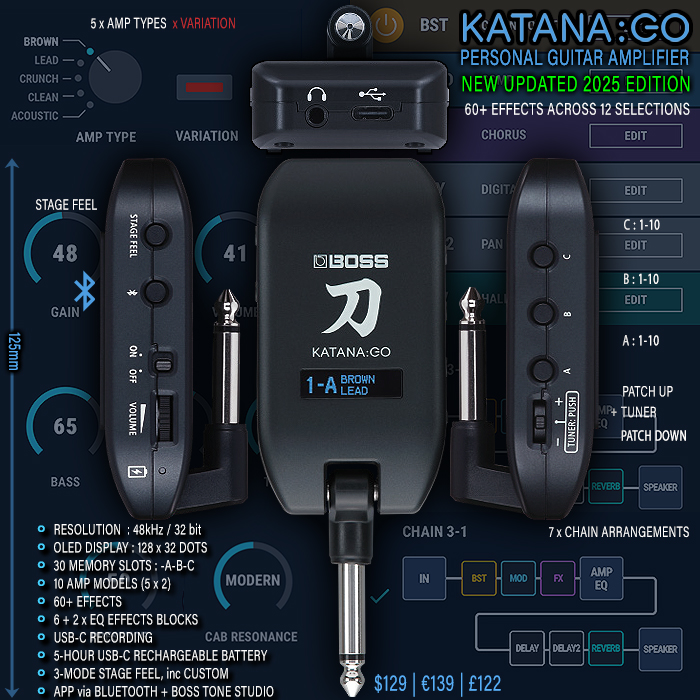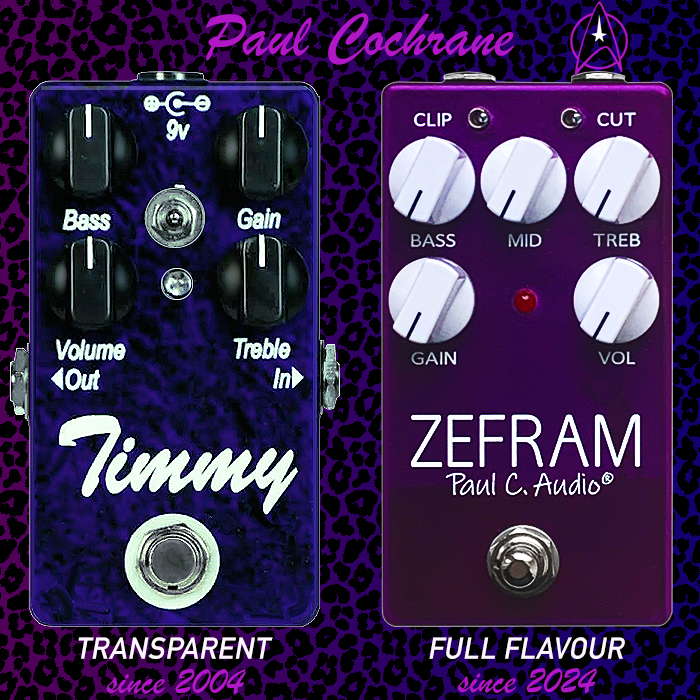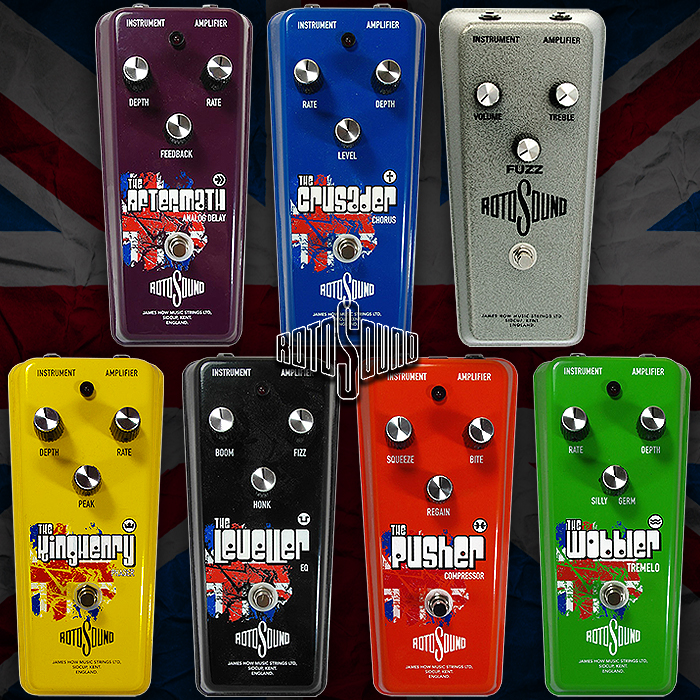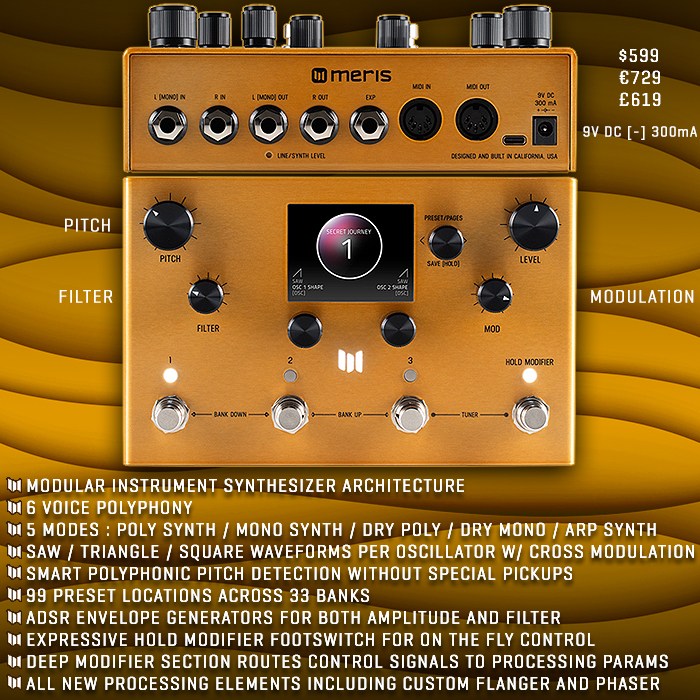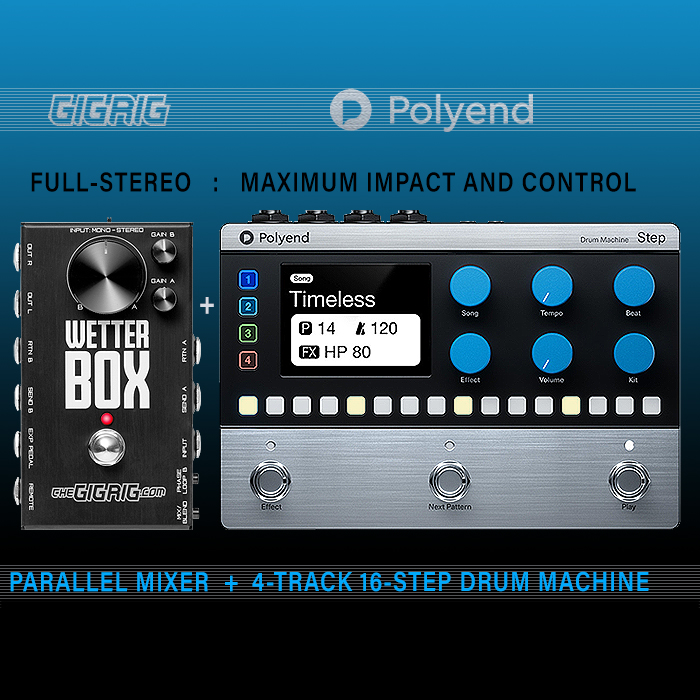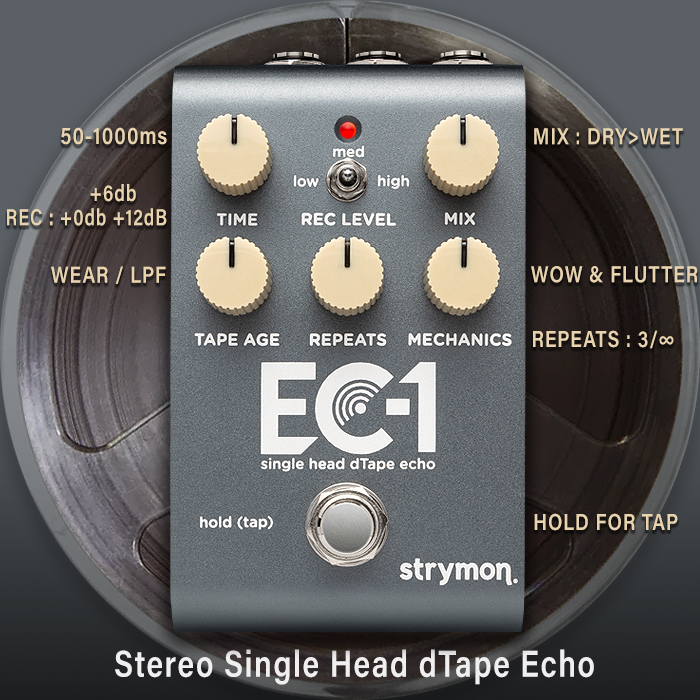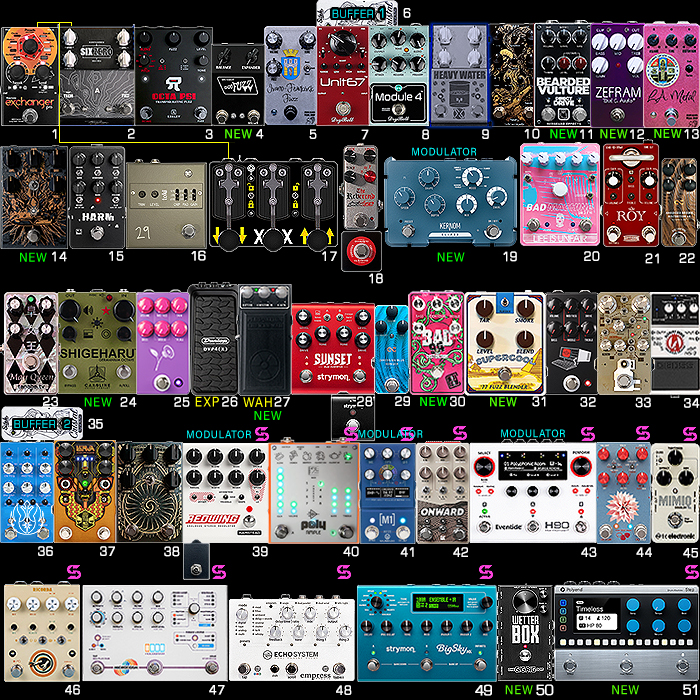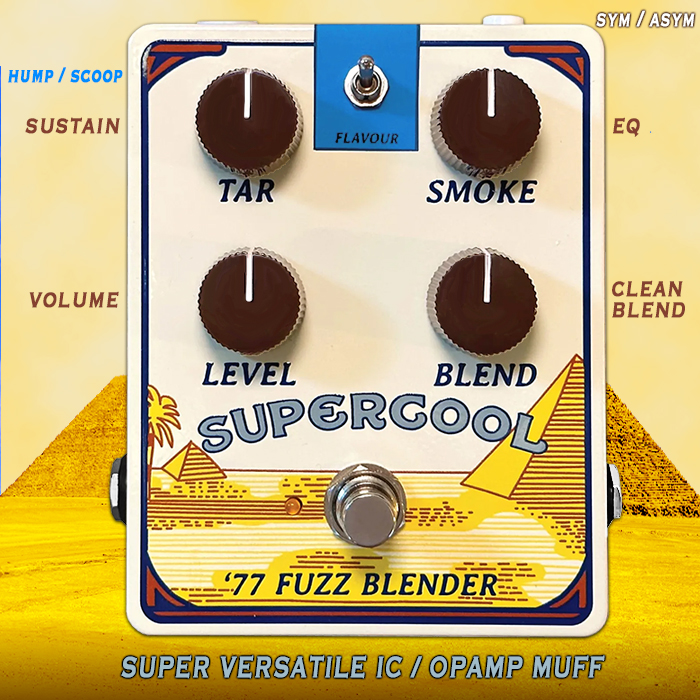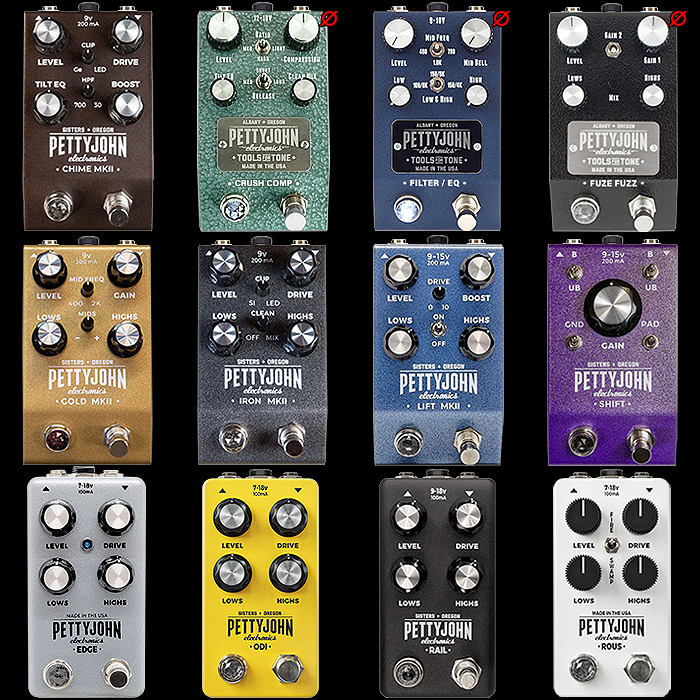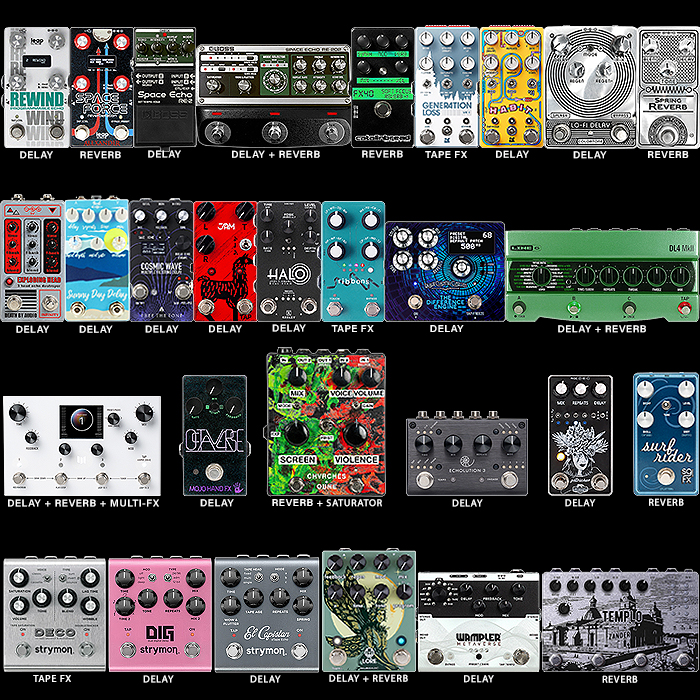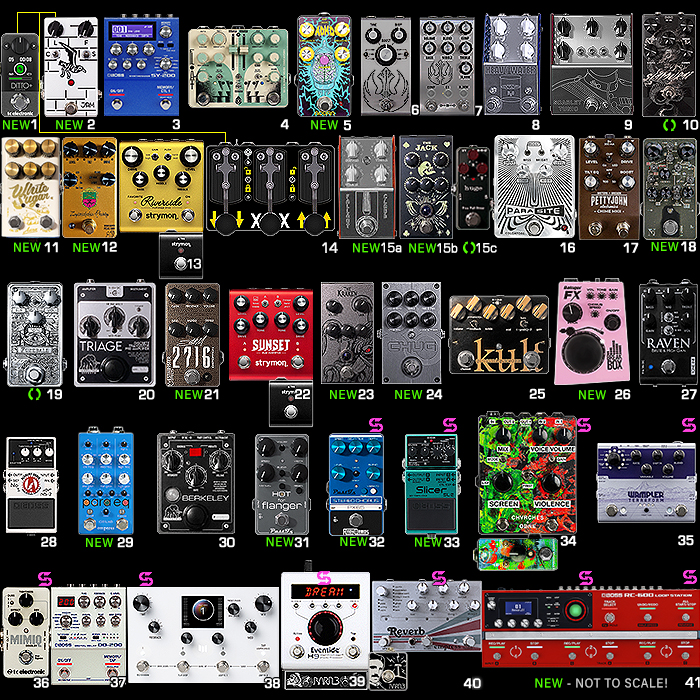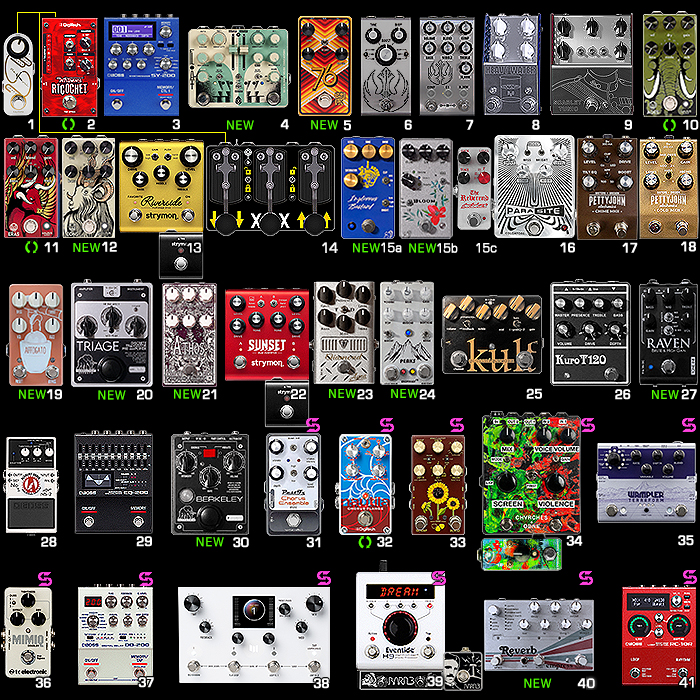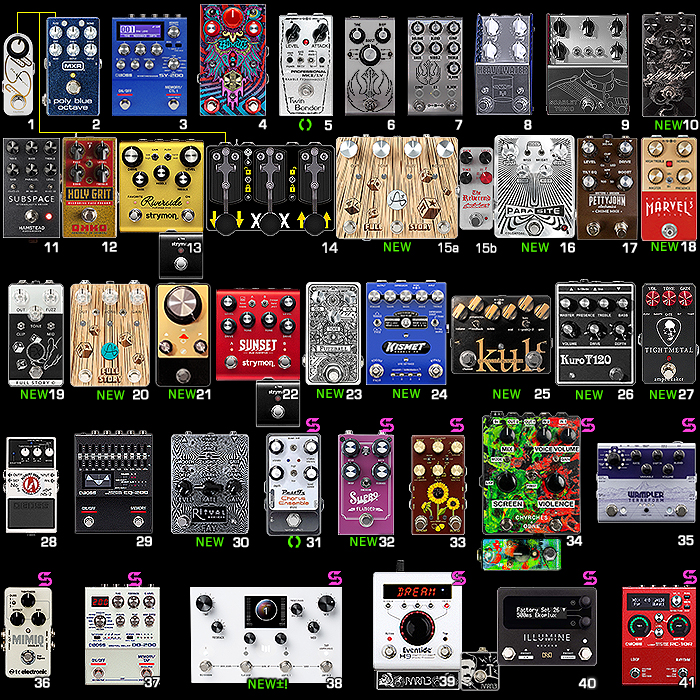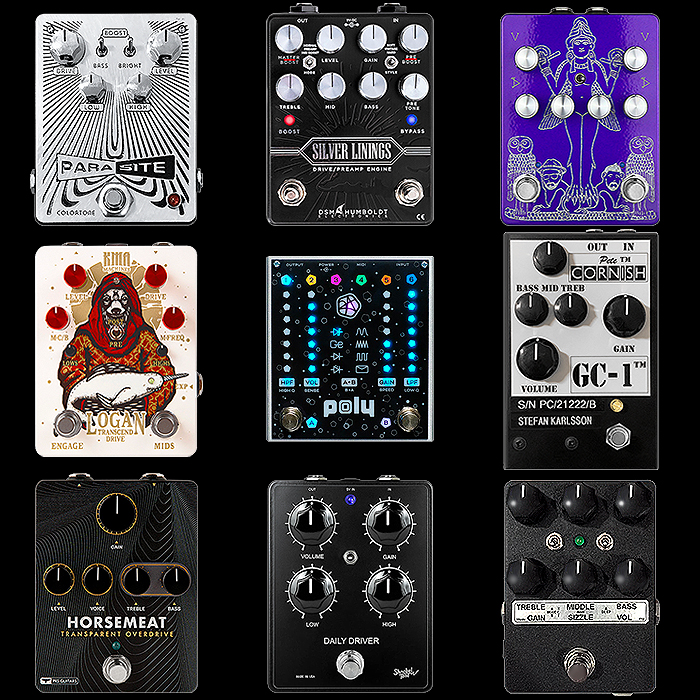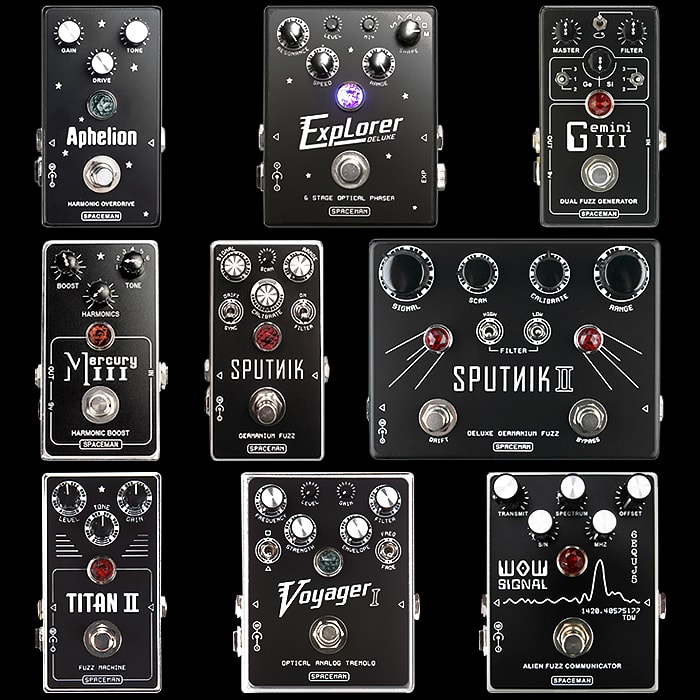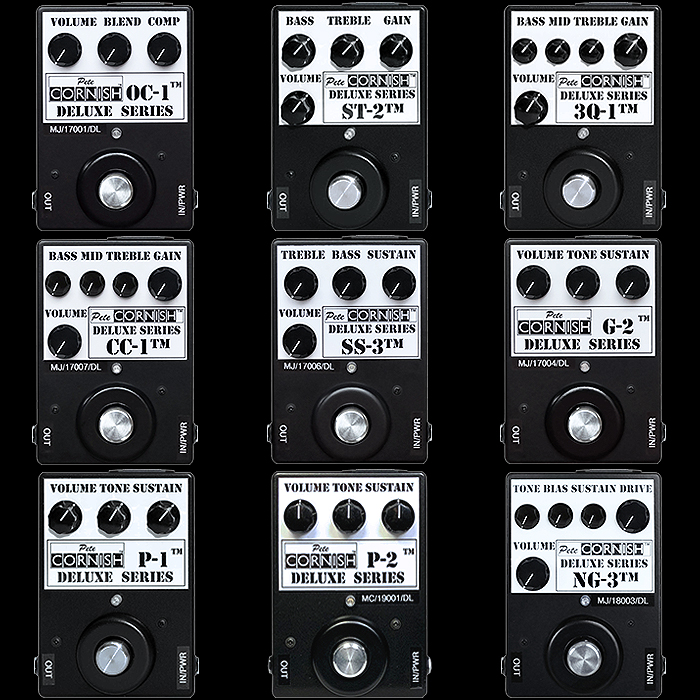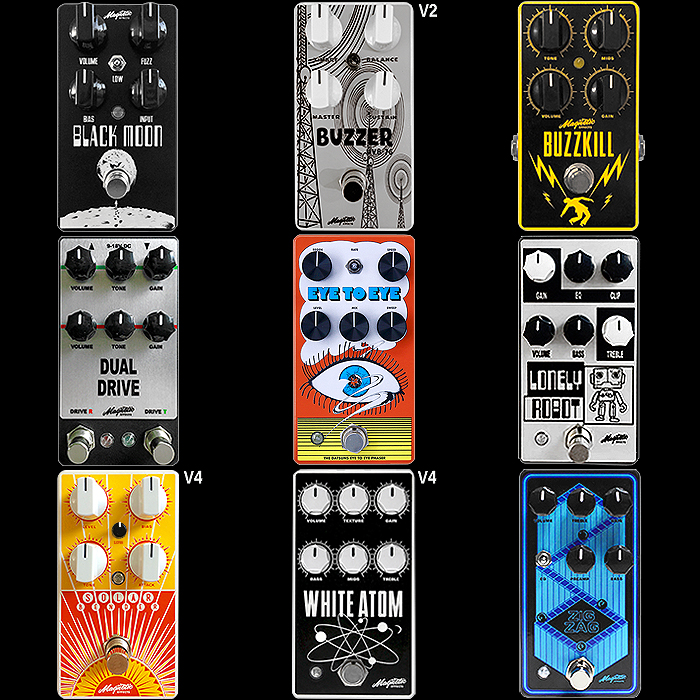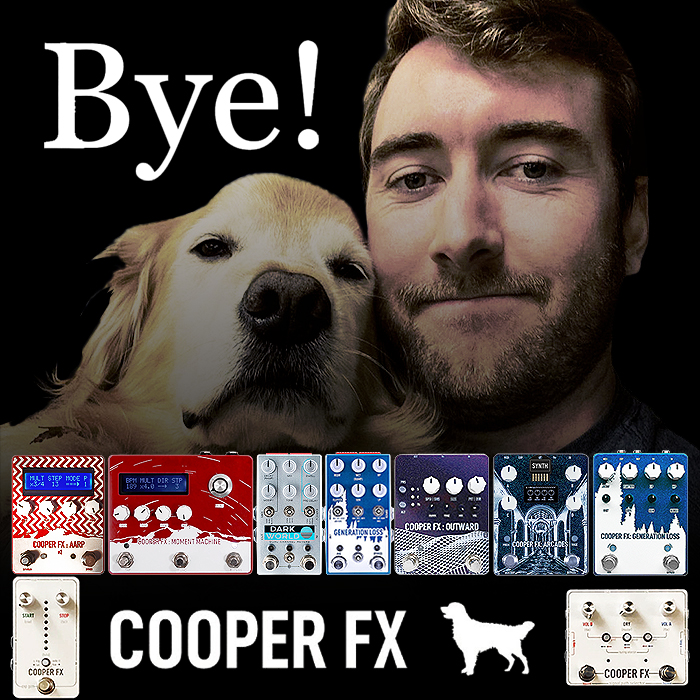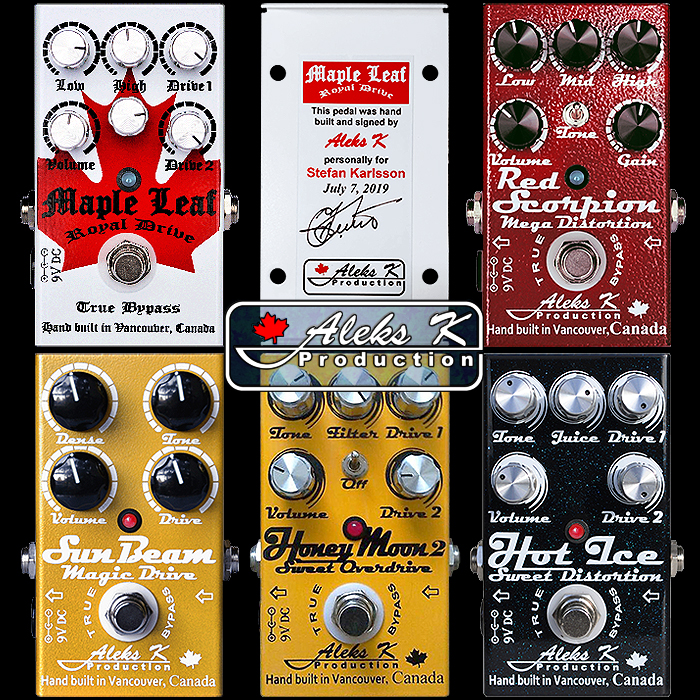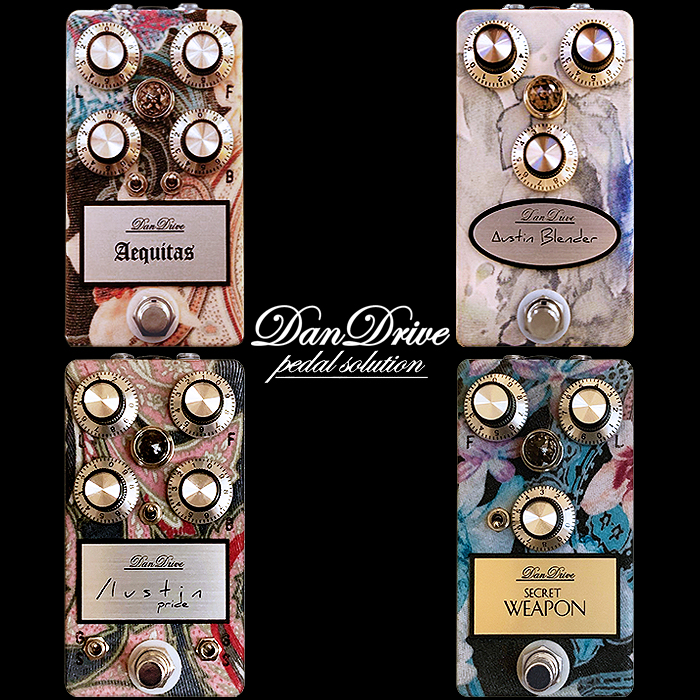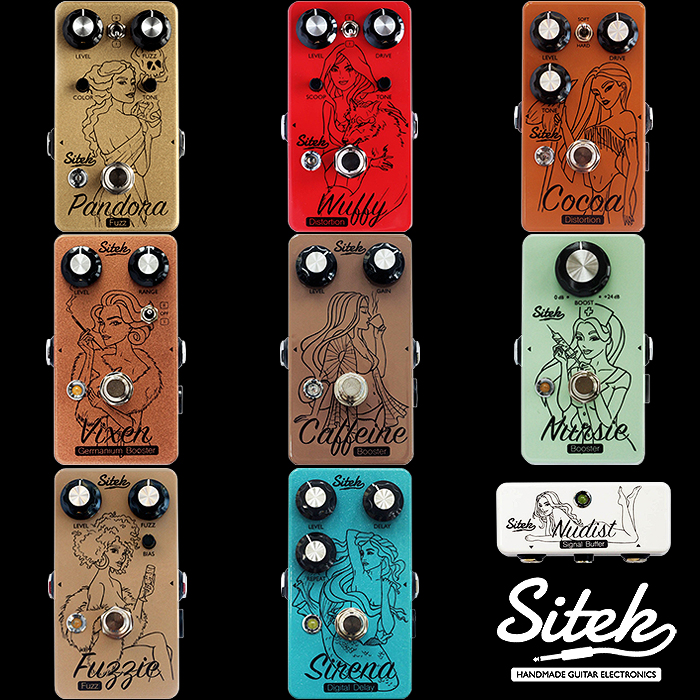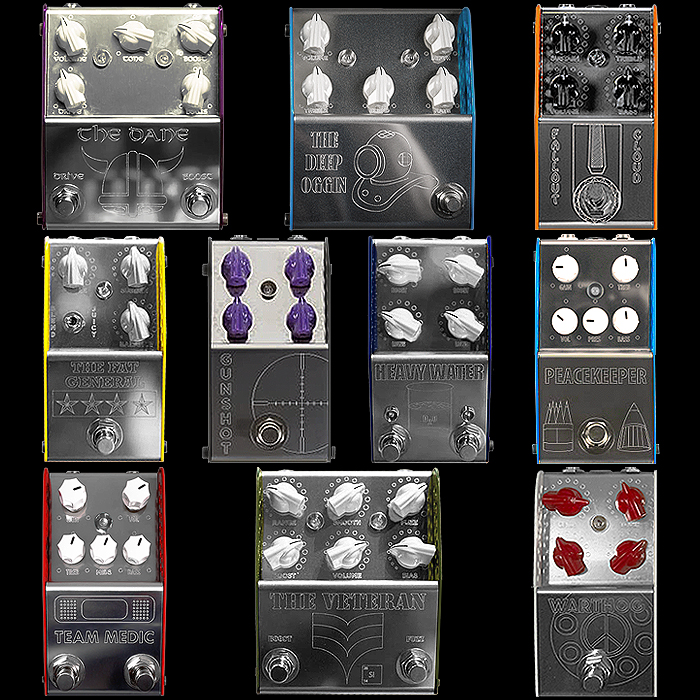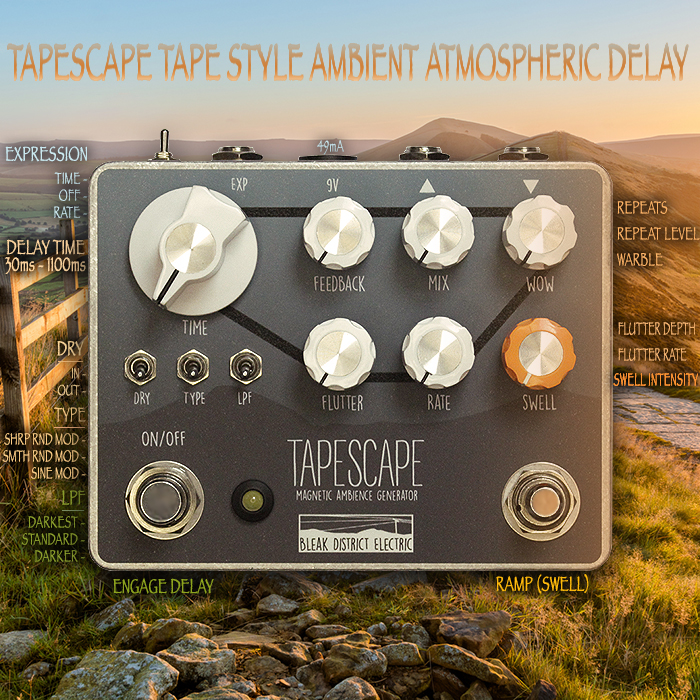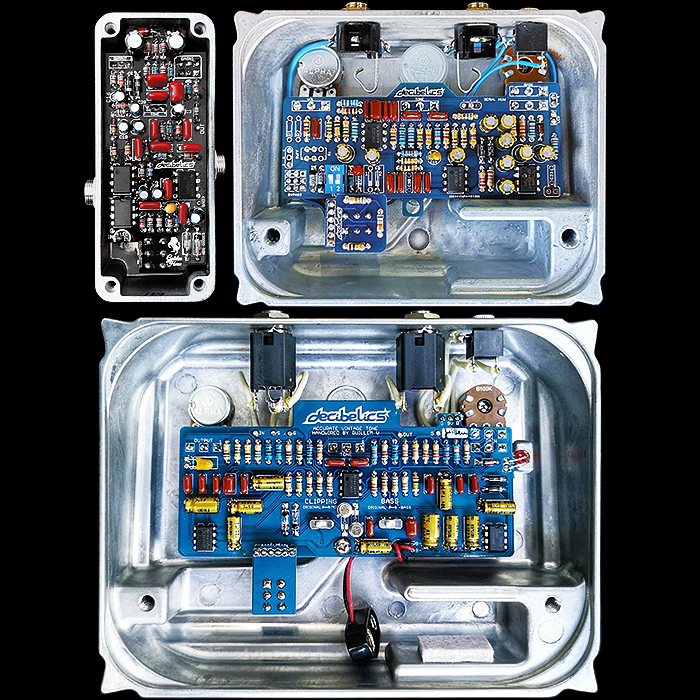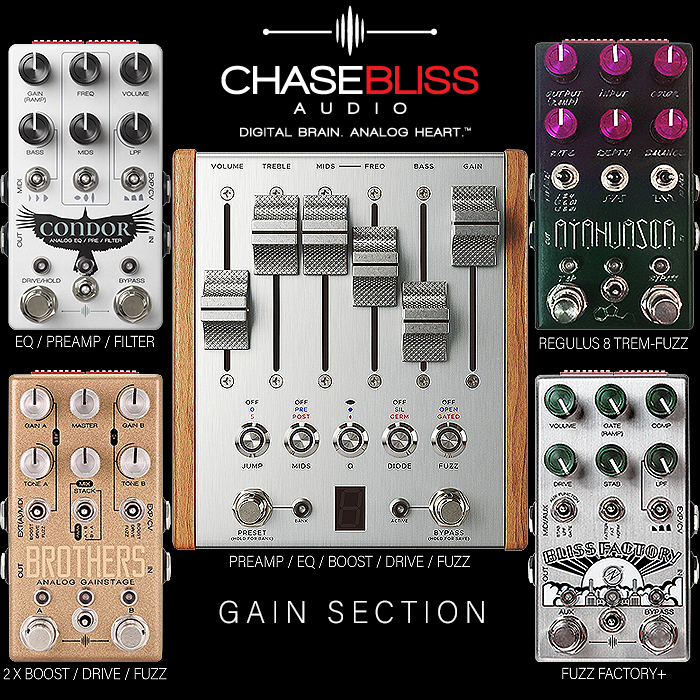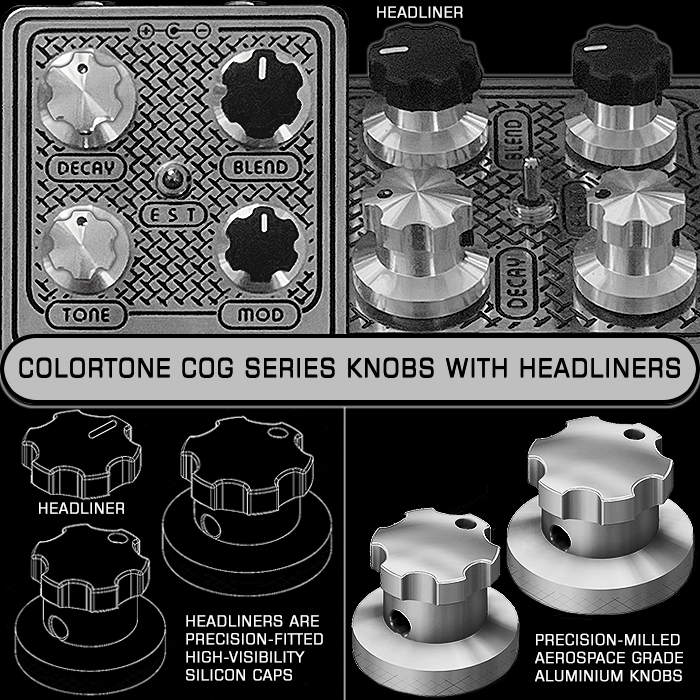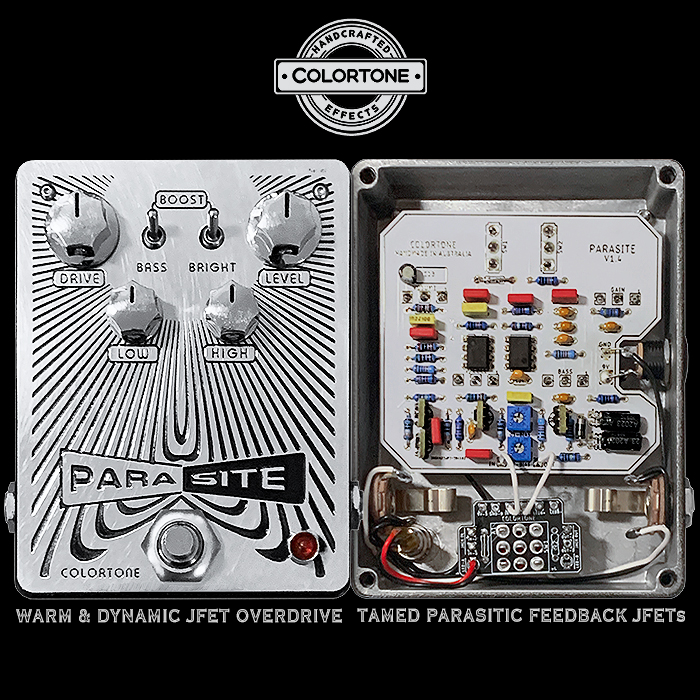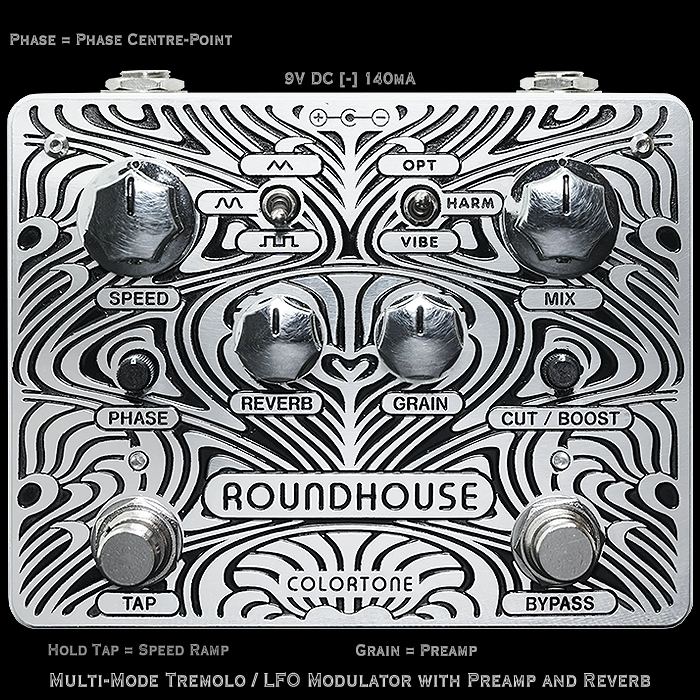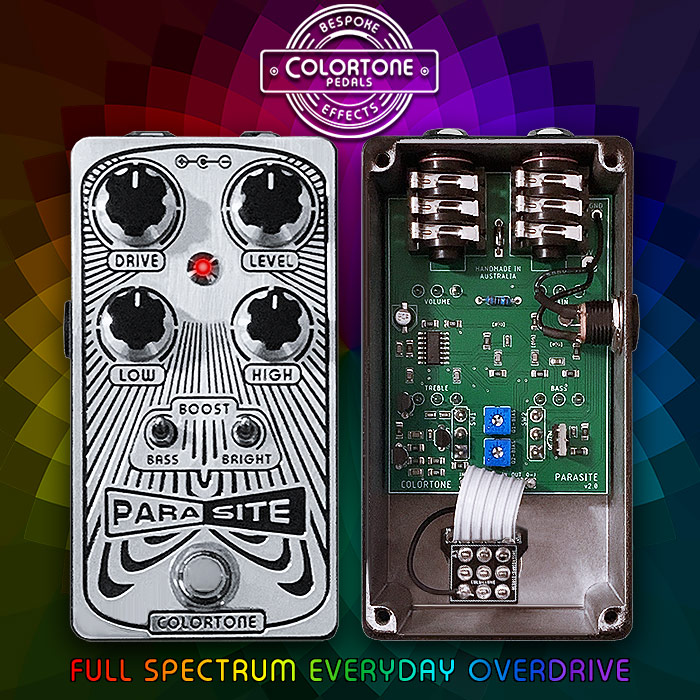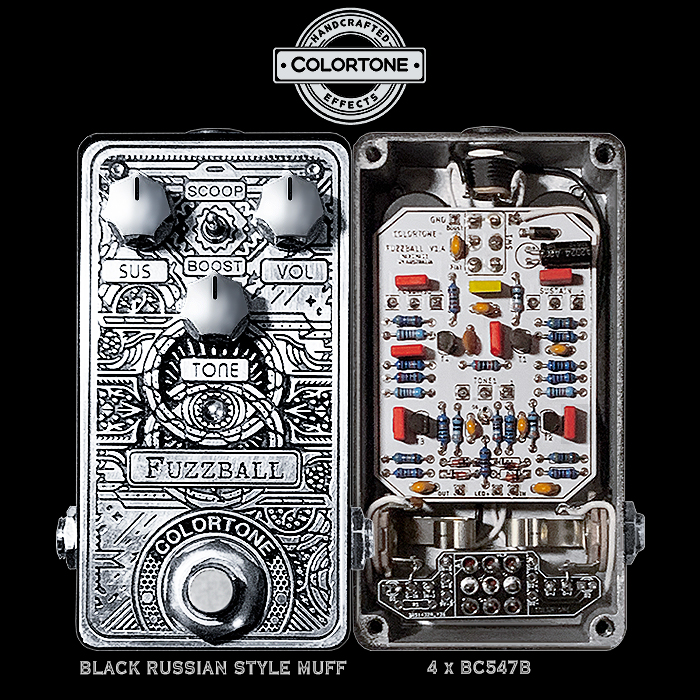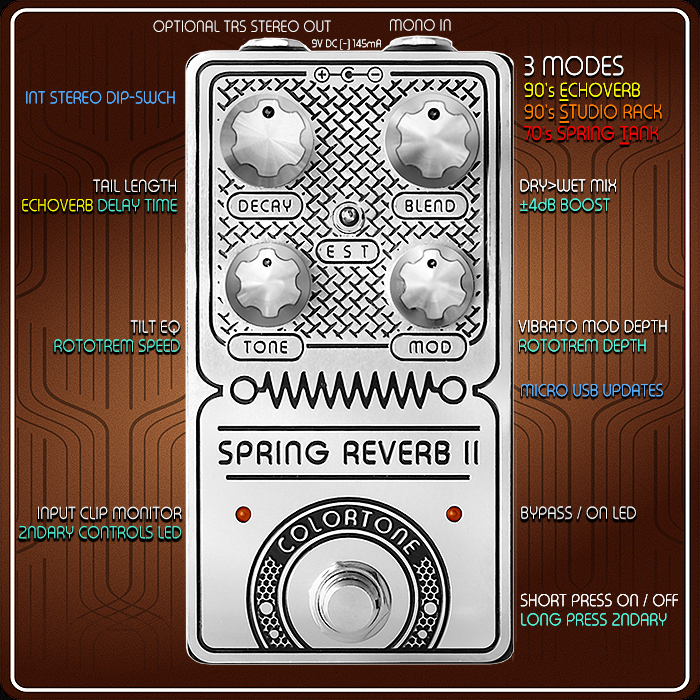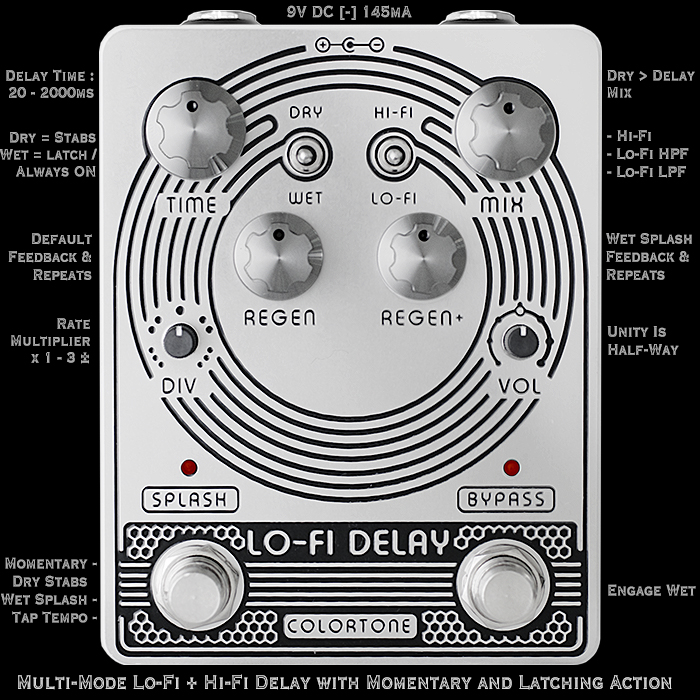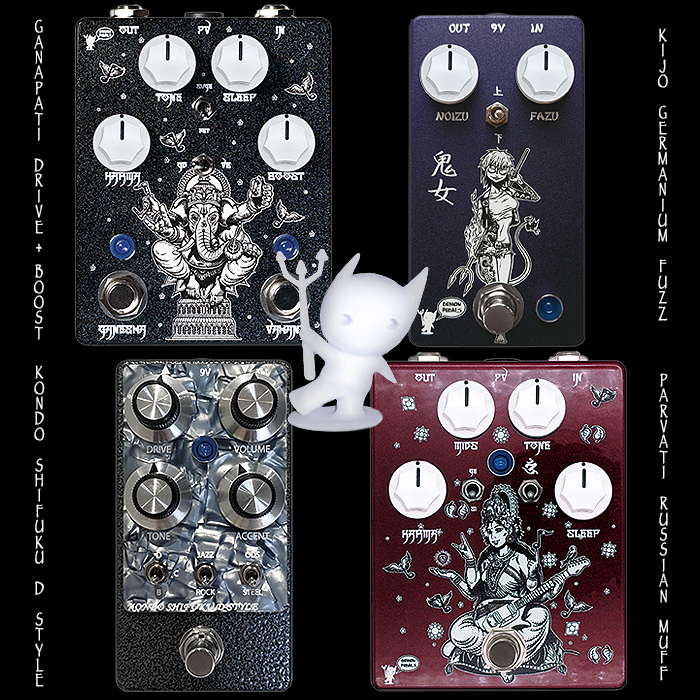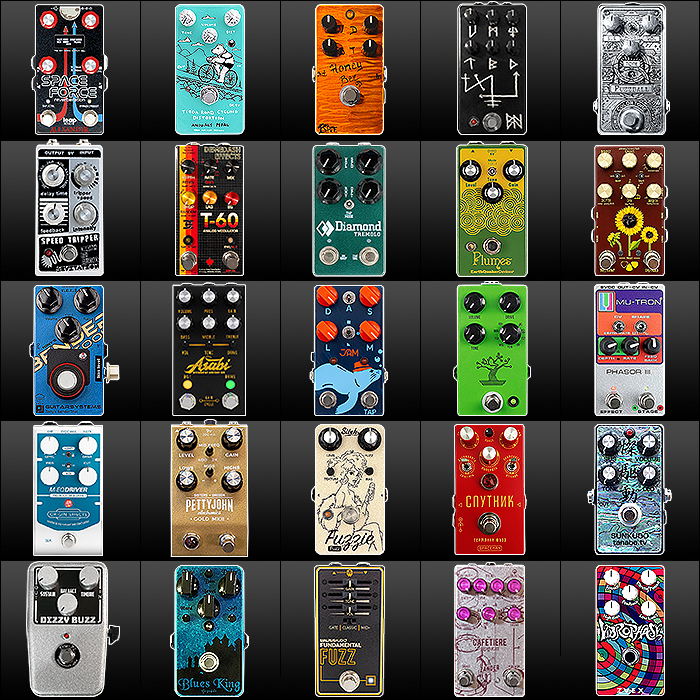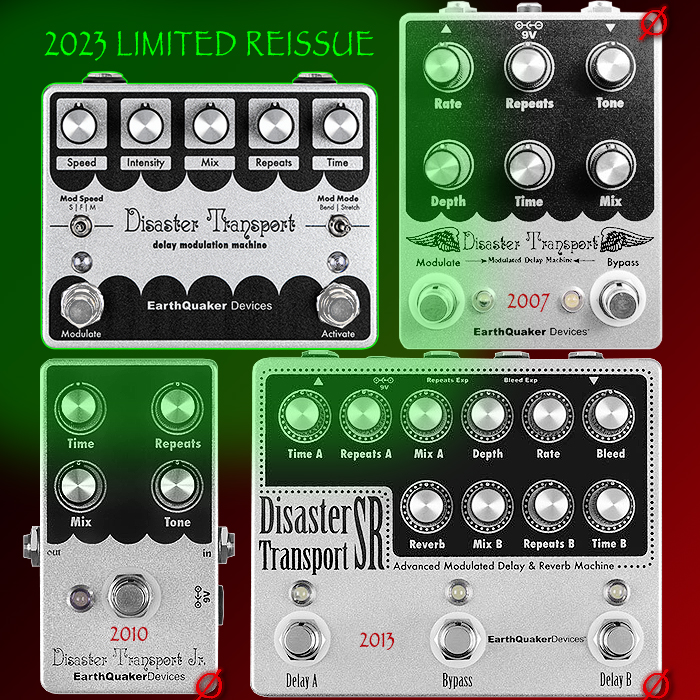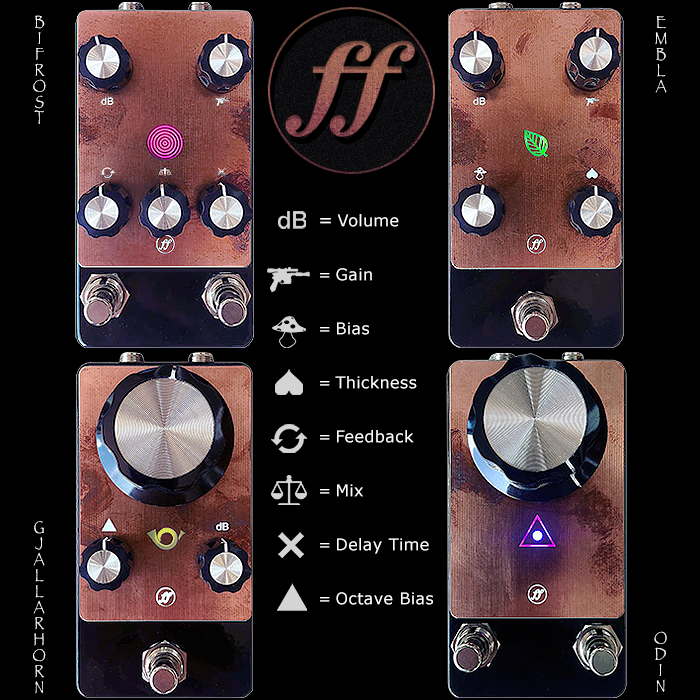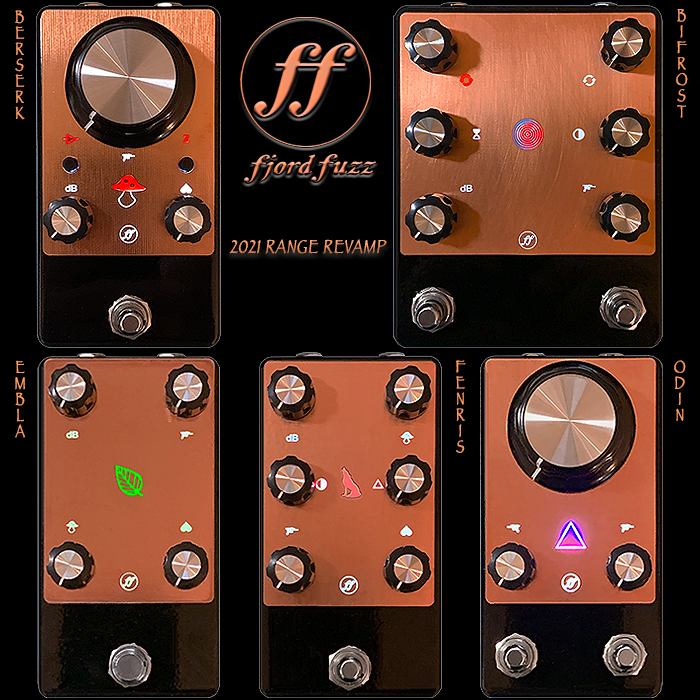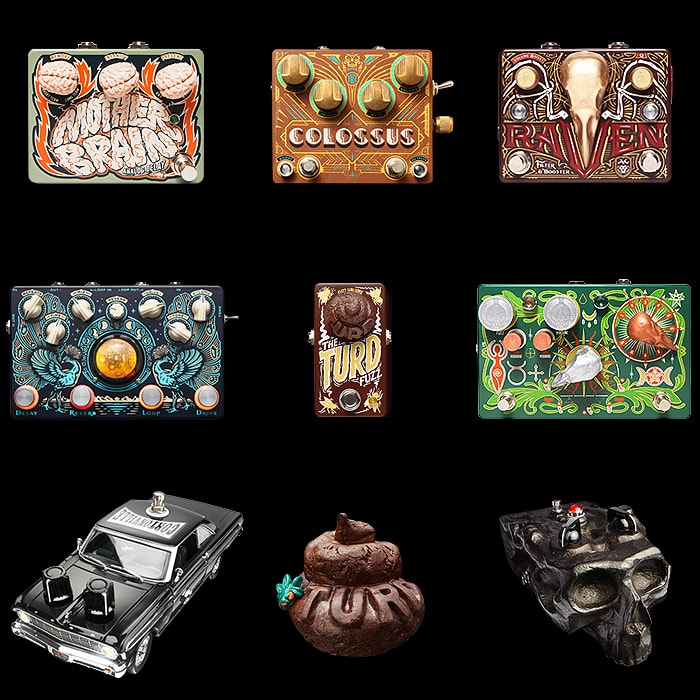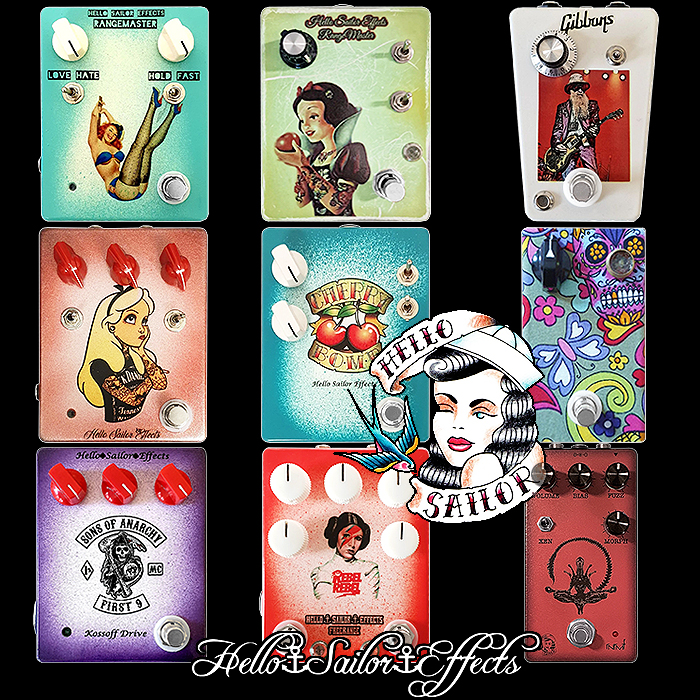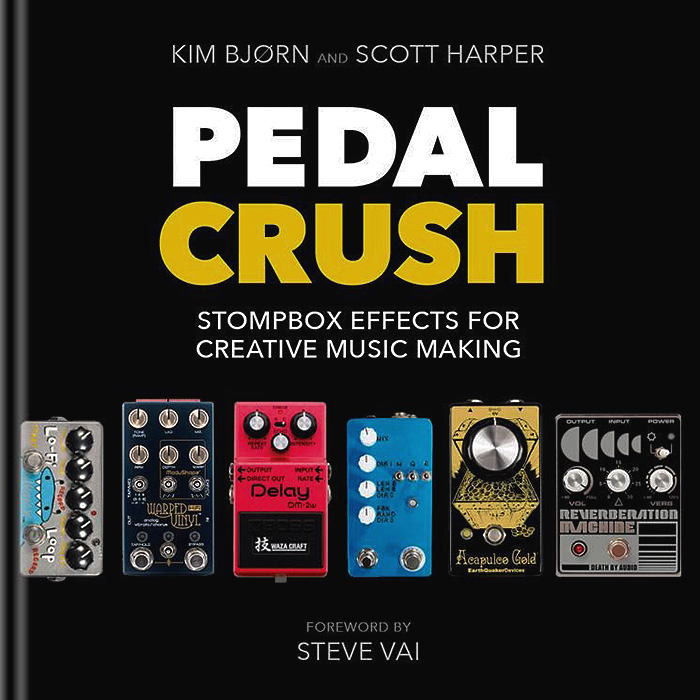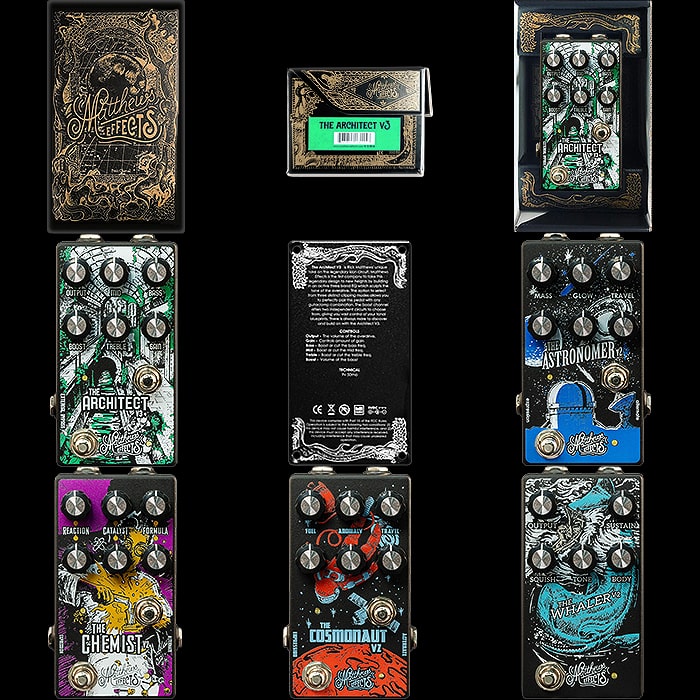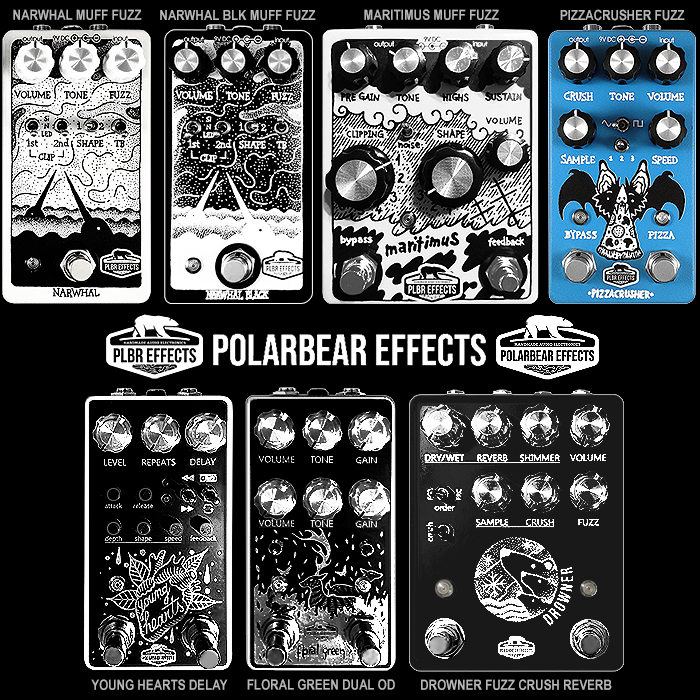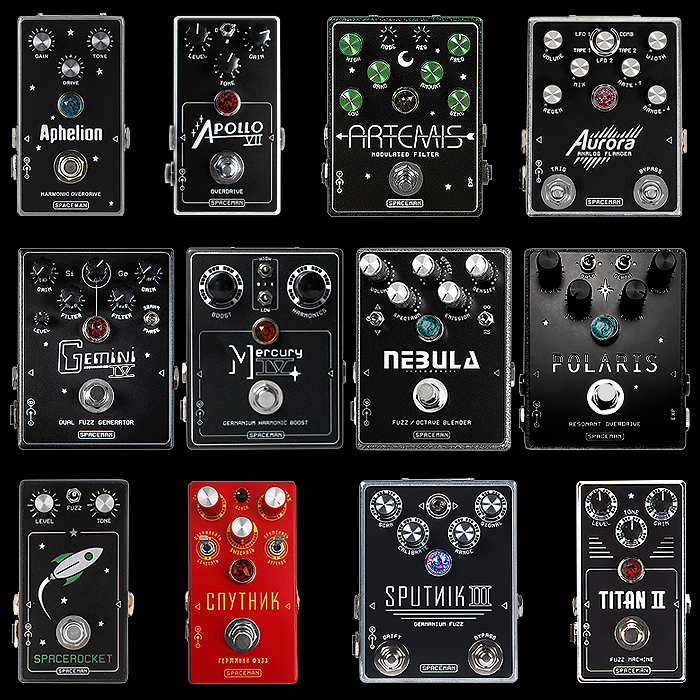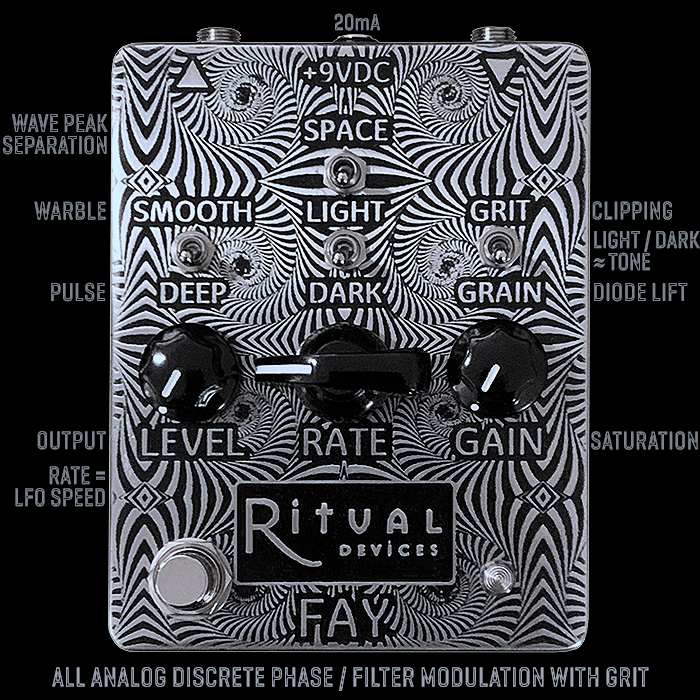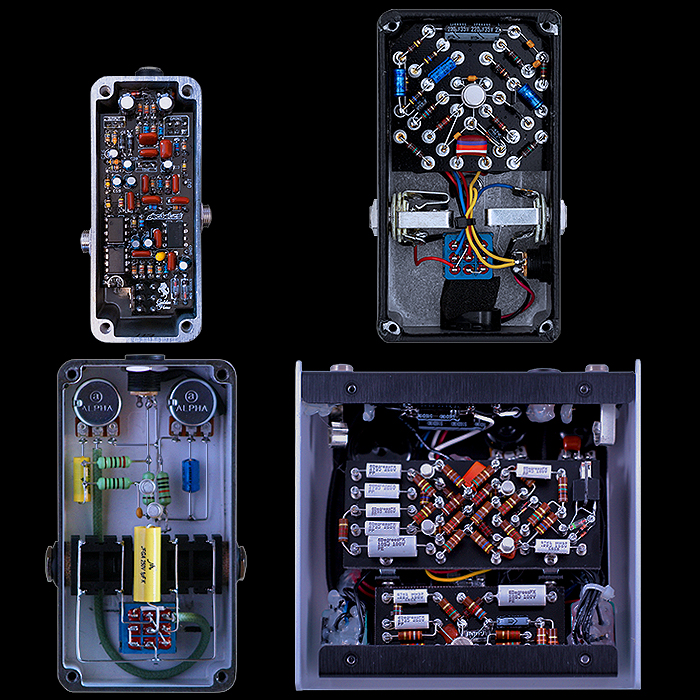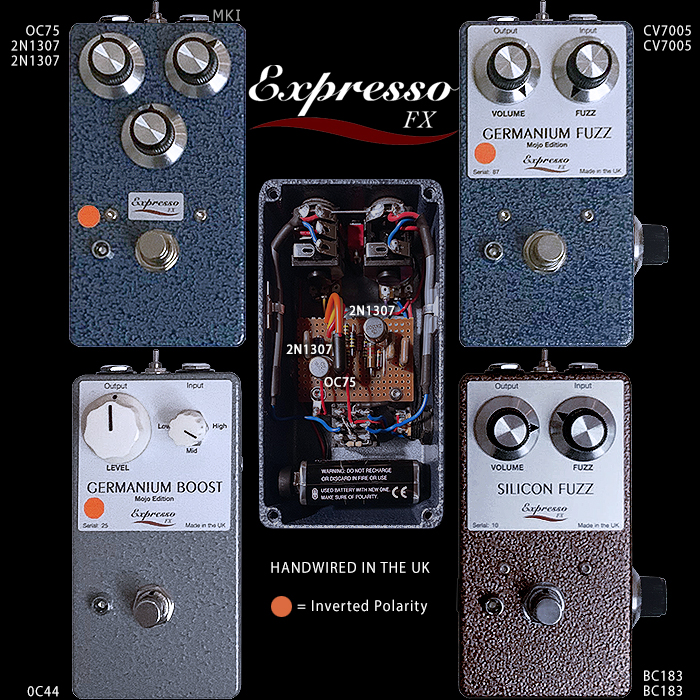Spectacular Dazzling Colortone Pedals - meticulously hand-crafted by AD Hauser in the heart of Sydney's Cool Newtown District
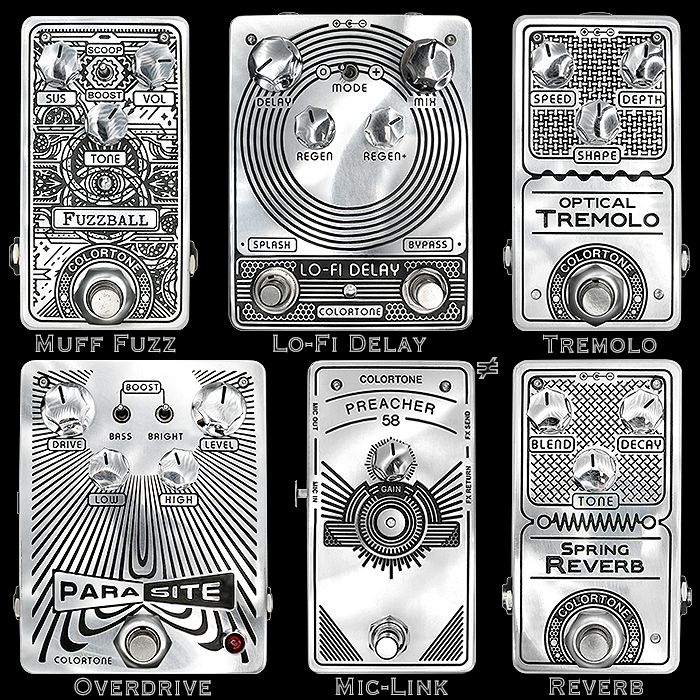
When I first encountered Colortone Pedals I was immediately struck by the beautiful attention to detail and craftsmanship of these intricate stompboxes. And it was somewhat exhilarating to trace back the origins and evolution which brought them so quickly to such a well-formed place.
AD Hauser has been involved in pedal-building for around 5 years or so - where the Colortone brand first appeared on a pedal in the latter half of 2019. By day AD is a Film Colorist - where he patiently and carefully balances and in effect mixes the onscreen colour balance, mood, lighting and exposure.
AD has been a Professional Film Colorist for well over 30 years now - initially working directly for different Film Post Production companies, but latterly more Freelance - to allow him to focus more on his pedal crafting business.
While working in the UK as a colorist in Soho (90’s) - AD was responsible for the color-grading on music videos for Soundgarden’s ’Black Hole Sun’, Sting’s ’When We Dance’, The Pretenders, Brian Ferry, Simply Red and the Eurythmics. Major film grading credits include Baz Luhrmann’s -’The Great Gatsby’ and the Spierig Brothers’ time-travel conundrum ’Predestination’.
The Colortone moniker very much comes from AD’s Colorist roots, and evokes a sort of Synesthesia of sound waves forming and being represented by certain tangible physical manifestations.
Origins
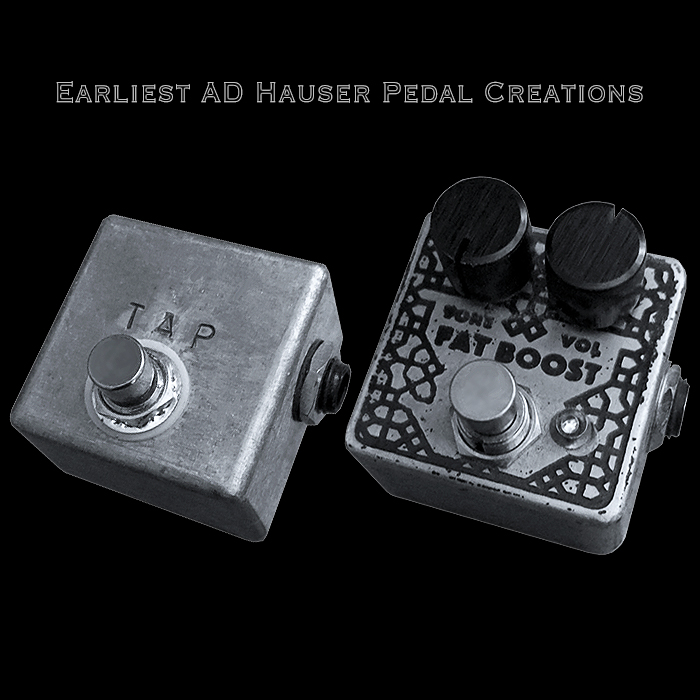
Around 5 years ago AD started properly dabbling with pedal builds - when he needed a tap-tempo controller for one of his Strymon pedals - the Flint TremoVerb as I recall. Where instead of buying a ready-made one in though - he thought it might be fun to try his hand at making his own version of this very simple single footswitch micro pedal design. That experiment was such a success, that it was not long before he then built his next pedal - a 2-knob sort of fat linear boost - which he still very much uses to this day (both pictured above).
It was largely while working at a band rehearsal studio in Melbourne and at an audio manufacturing company (Lectrum) - soldering PCBs on weekends during school years, where AD likely cemented an enduring love for electronics and sound-design - which is what most likely led him down this current path.
After the success of the two initial pedals - there then followed a considerable period of experimentation - principally with gain and EQ circuits - where AD was steadily acquiring the knowledge of employing different types of components - chiefly Opamps and discrete component parts - including Transistors, JFETs and Diodes.
All of this built up towards the creation of the Colortone brand - where the very first pedal prototype was ready at the tail-end of 2019 - a cool Optical Tremolo which was engineered to match the output of AD's favourite and mainstay Fender 68 Custom Vibrolux Reverb Amp.
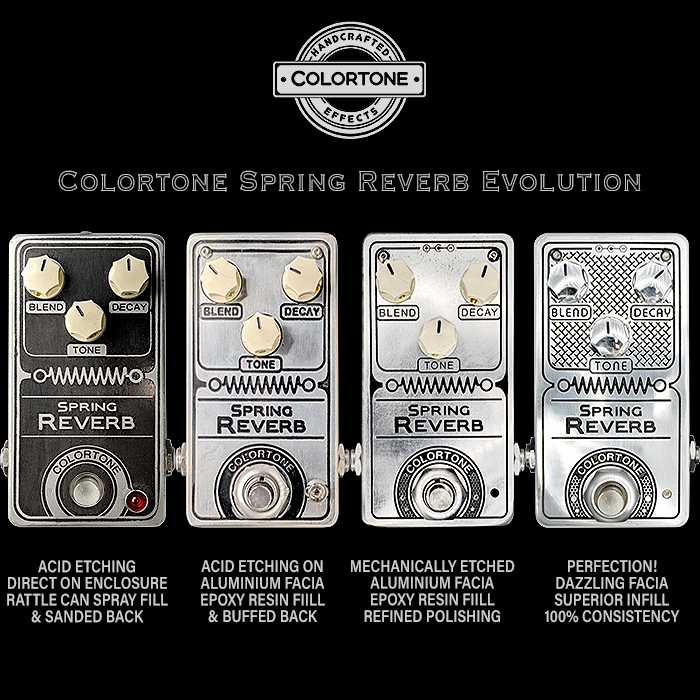
A considerable effort went into the styling of the pedal - with AD evolving, innovating and refining the process of his signature geometric artwork-etched, in-filled and polished aluminium facia plates - which progress you can see beautifully illustrated in the above visual.
All the pedals AD has originated - stemmed from his particular usage requirements in shaping his own rig, based on his favourite amp, modulation, delay and reverb tones - and where there are currently 6 pedals in the range with two more fairly imminent - including the 'Roundhouse' TremoVibe and 'Sum-Zero' Dual Reverse and Forward Delay.
The Exacting Build Process
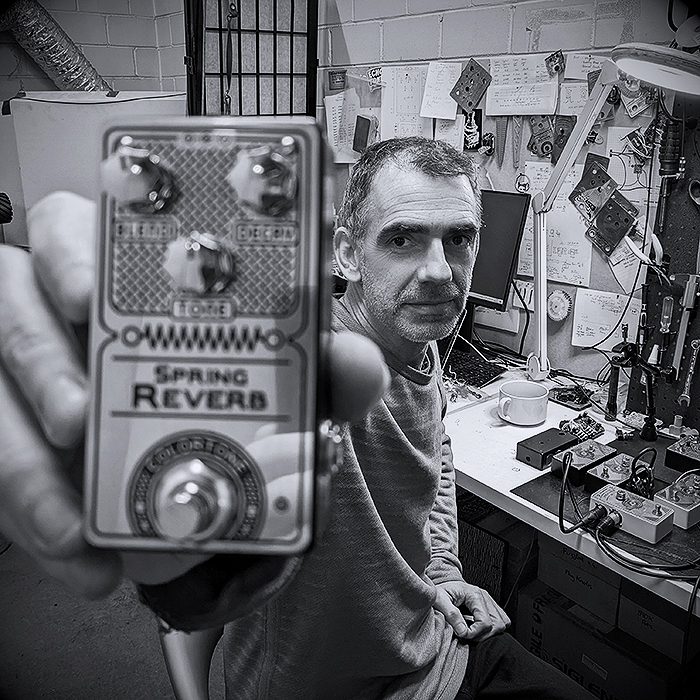
You can clearly see from AD's immaculately arranged workshop space how detail-oriented he is - with everything fastidiously and carefully organised in dedicated workspace areas - and including the inestimably cool display panel featuring all the different current PCB's (as below).
Over the years AD has significantly refined his build process - improving the quality of his output along the way, as well as making the builds ever more exacting, robust, efficient and consistent. It's important to say that apart from the raw enclosures and PCB's - AD currently crafts and makes everything in-house in his superbly well-appointed workshop space.
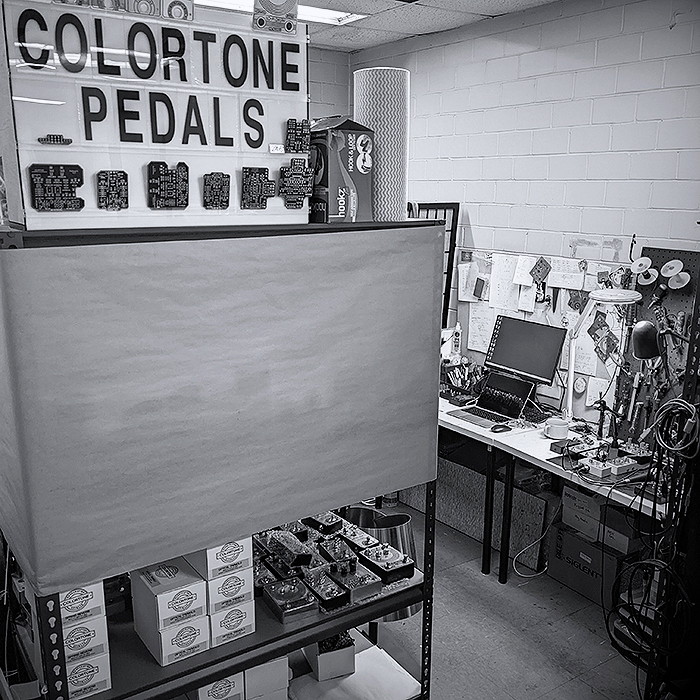
Obviously a lot of work goes into PCB prototyping and component sourcing and selection - but for a while it was the pedal finishing that was the most troublesome - with AD experimenting with all manner of different techniques of etching, inlaying and buffing those pedals to achieve total quality reproducibility in an efficient manner.
He started off with acid-etching and a tonne of buffing compound but has evolved a much tidier now mechanical etching with infilled then baked enamel, and more efficient polishing in the final stage. Over the years various infill materials have been trialled - until AD came across a particular type of enamel which really works well. Even then he had to refine the artwork further as the enamel did not settle particularly well over larger areas of coverage - which is where AD evolved the honeycomb pattern - which I like to think derives from sound insulation - as several of those materials are honeycomb in structure or shape - and that of course adds more to the lore of Colortone.

If you scan through the Colortone Instagram page you can see the gradual process of refinement and evolution over just a couple of years really - where the nature of the enamel infill gradually changes. Also you can see how the earlier pedals did not have the same degree of artwork detail as the current editions. And various improvements have been implemented over those 2 years - to bring those pedals to their now perfect format.

Former models and editions also had either White or Black knobs to match the colour of the enclosure - which indeed comes in those two options. AD did experiment earlier on with all-polished enclosure designs - but that process was a little too messy and too prone to individual deviations.
AD is a stickler for quality - which is very evidently born out by current productions - which are dazzling Fabergé-esque jewel boxes whose outside countenance reflects the degree of attention to detail of every part of the build - including beautifully arranged and assembled interior PCBs. Considering how much work goes into these entirely hand-made pedals - they're very reasonably priced indeed!
The Current Colortone Range

Before I go into the usual individual pedal details - arranged in alphabetical order by name - I thought I should do a brief overview of the range as it stands today.
In terms of origination - the Vibrolux-style Optical Tremolo came first, next was the Belton Brick type Spring Reverb, then the PT2399 Lo-Fi Delay, Parasite Overdrive and Fuzzball, and finally the Preacher 58 Dynamic Mic to Guitar Pedal Interface - which allows you to plug your vocal Mic into your own specific arrangement of pedal effects.
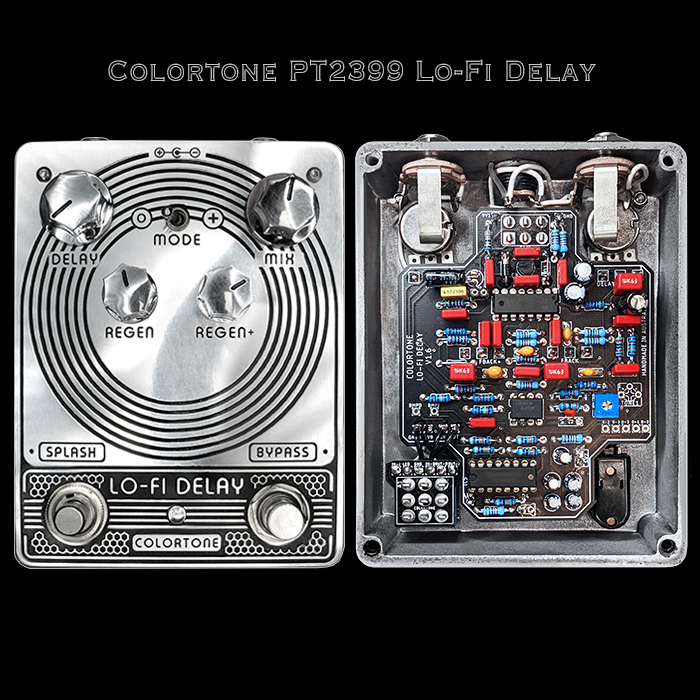
All pedals now come with those beautifully matched Chrome knobs - which just add the icing on top for the pedals' visual appeal - and you of course have a choice of gloss black or gloss white enclosures - one of which accentuates the enamel inlay, and the other which matches the gleam and dazzle of the highlights of those polished aluminium facia panels.
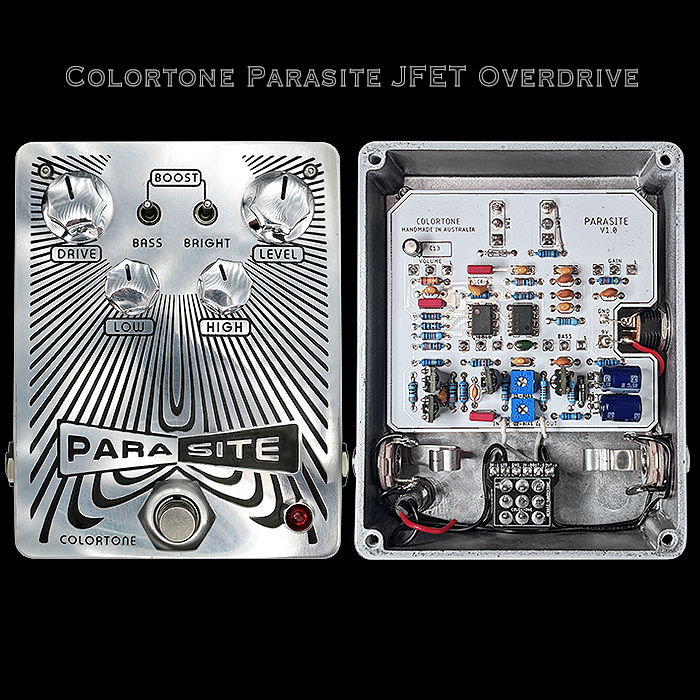
Each of these pedals has been honed towards AD's own exacting playback requirement and all have been fully road-tested as part of his own live gigging rig. AD tests everything through his beloved Fender Vibrolux Amp - and uses a variety of guitars - mostly Les Paul and Strat varieties to test the output - also a '69 Gibson SG and a 2014 cherry Firebird reissue.
Fuzzball Black Russian Style Muff Fuzz - A$279.00
Controls - Sustain, Mids : Scoop / Boost, Volume, Tone.
Readers know how I love a cool take on a Big Muff - having already around 90 odd varieties in the reference collection. Where I only had one specifically stand-alone Black Russian variant before adding this one. So this singing, and super smooth sustaining, BC547-loaded variant is a welcome addition to my Big Muff arsenal. You can really hear its smooth lyrical nature in AD's above demo. This adds a Mids Scoop / Boost toggle-switch into the mix so you can get a more cutting tone as regards your band-mix - with boosted mids applied. This was one that was always going to end up in the collection. Other than the Mids switch it has the very typical Sustain (Gain), Volume and Tone controls of a regular Muff.
Lo-Fi Delay PT2399 type - A$299
Controls - Delay Time, Mode : 0 (Latching) / + (Momentary), Mix, Regen / Feedback for Stock Mode, Regen+ / Feedback+ for Momentary Mode.
This is a rather special take on PT2399 powered delay - where some explanation is needed of the Mode switch and Regen+ controls along with the multi-function Splash second footswitch. Delay and Mix are wholly self explanatory. And you essentially have separate Regen / Regen+ controls for the 0 and (+) Modes. Essentially (+) Mode means that the delay only functions momentarily while engaged - so that you can stomp in stabs of delay feedback - sort of as dub style accents. In normal '0' Mode the Delay is latched on and Splash delivers that cool regenerative feedback effect, while in (+) Mode the Delay + Feedback is only engaged when you momentarily stomp on the Splash footswitch. So a really cool and dynamic take on Lo-Fi Delay with some superb improv playback capabilities.
Optical Tremolo (Vibrolux style) - A$279
Controls - Speed, Depth, Shape : Sine-Wave > Square-Wave form.
AD's very first pedal was modelled on the Tremolo of his favourite Fender Vibrolux amp. The Photocell bulb variety has a lovely open flutter to the tremolo but can get pretty percussive too at high levels of Depth and with Square-Wave shape applied. Just a really simple, elegant and versatile take on tremolo - and should very much appeal to those who already love that golden age of tube amp style tremolo sound!
Parasite JFET Ovedrive - A$299
Controls - Drive, Bass Boost, Bright Boost, Level, Low, High.
A JFET Overdrive with Silicon Soft Clipping, for Harmonious Amp-like breakup and grit - most similar to a JTM45 - particularly at higher levels of gain. AD uses this as his always-on soft overdrive to add warmth, texture and grit to his core signal (Gibson Humbuckers). And the clever control topology here gets the maximum utility out of a really well-chosen arrangement of controls. Regular Drive and Level Controls - then with Passive 2-Band James style EQ and smart Bass and Bright Boost switches to swiftly accentuate that part of the signal. I'm obviously a sucker of fuzzes and overdrives - so this one is in the collection too - it just has a really elegant amp-like character to its output that really recommends it!
Preacher 58 Dynamic Mic to Guitar Pedal Interface - $A299
Controls - Gain / Master Level.
The Preacher 58 (SM58!) is probably the most unique of AD's pedals - essentially a universal adapter interface for plugging a vocal mic into your preferred effects chain. So you can essentially and simply plug in a Mic into any pedal effects chain of your choosing - using this smart gateway utility. Note that this pedal is actually in slightly larger 125B enclosure - where the other pedals are 1590B and 1590BB - so as indicated by the 'not equal / Not to Scale' symbol - this pedal is slightly larger than pictured - but is displayed in 1590B dimensions for sake of visual balance and symmetry! Note that the Pracher 58 is specifically designed for Dynamic mics - like indeed the universally loved Shure SM58.
Spring Reverb (Belton Brick style) - A$279
Controls - Blend, Decay, Tone.
AD's second Colortone creation is this cool Neunaber Belton Brick type 'Spring Reverb in a Box'. Brian Neunaber back in 2007 sandwiched 3 x Cascaded PT2399 digital delay chips together and added some comb filter to their output - producing a really cool Spring Reverb sounding effect which delay times ranging from about 30-40ms, with different Belton Brick Modules ranging from 0.5 to 3.2s of Decay Time. Interestingly Brian never used his patent in one of his own pedals - where he's best known now for his DSP WET Reverb Algorithm. The 'Belton Brick' in the meantime garnered the 'Spring Reverb in a Box' moniker and is still held in high regard by many a surf-rock aficionado.
Colortone Pedal Availability

Colortone Pedals are of course available direct from the Colortone Webstore - while they are also currently being stocked by Melbourne's Deluxe Guitars, Found Sound, Echo Tone Guitars, Sunburst Music and Global Vintage. More dealers being added soon ...







